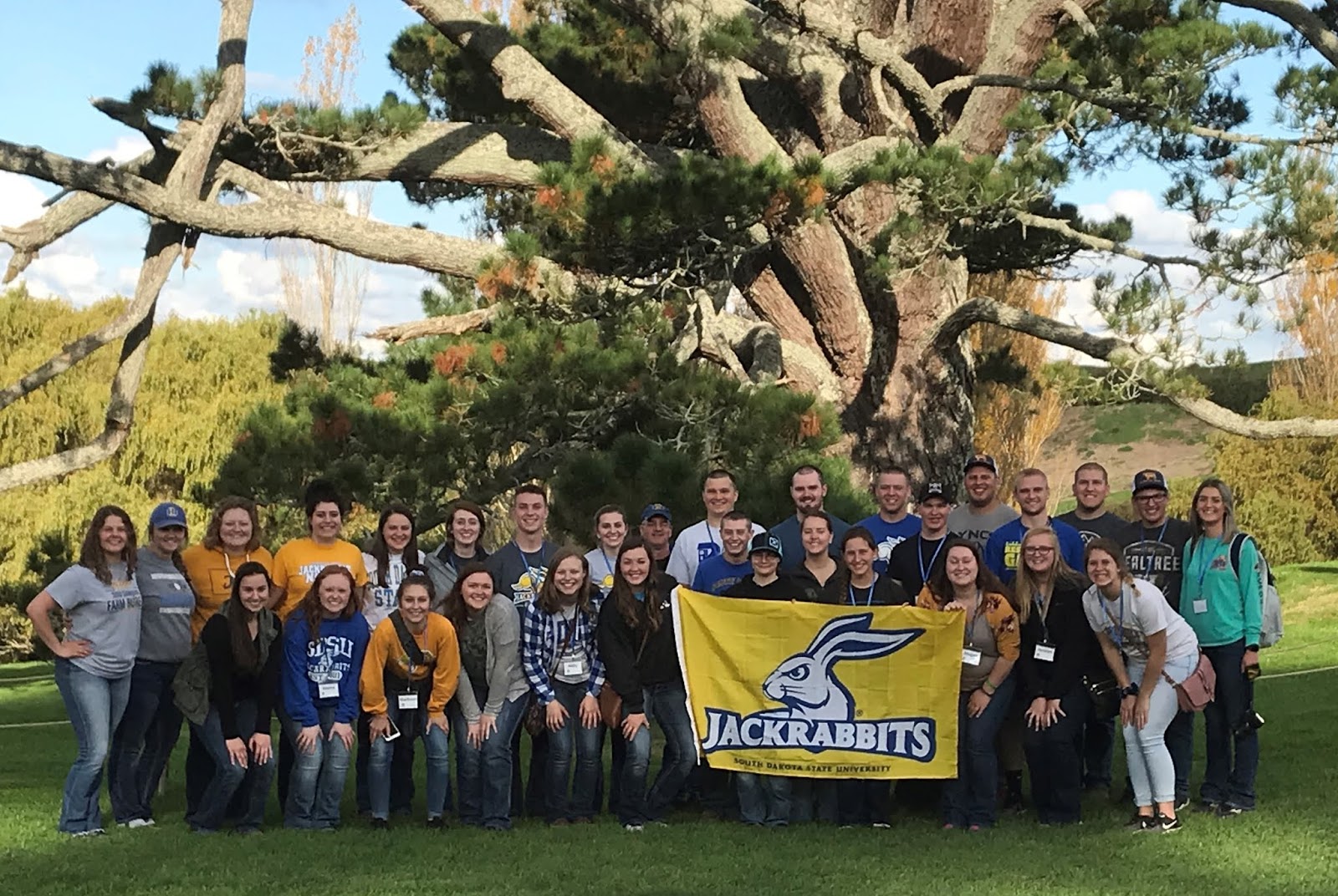 |
| Group picture in from of the Party Tree at
Hobbiton |
 |
| Connie and her 21st Birthday |
We
started out this morning heading to a dairy farm owned by Grant Wills by
Matamata on the North Island. They winter 700 cows and 180 replacement heifers
on 244 hectares. Their diets include mainly grass, but they also feed a mixed
ration consisting of corn silage, tapioca, palm kernel extract, bread
byproduct, dry distiller grain solubles, grass silage, and whole kiwi fruit as
a high energy source. The cattle love the sweet taste of the kiwi and will
usually sort that out first. Their pastures are mainly ryegrass and white
clover. In New Zealand, they have an input scale of 1-5, 1 being the lowest and
5 being the highest amount of input. Grant’s farm is considered a 4 or 5
because they feed so many ingredients.
 |
| Whole Kiwi feedstuff |
 |
| Palm Kernel Extract |
They supply their milk to Fonterra,
which is a dairy manufacturing cooperative, of which he owns shares in equal to
the amount he produces. Most of his cattle are Kiwi Crosses, which is a
composite breed of Holstein/Friesian and Jersey breeds. He does still own some
purebred Holstein/Friesian cows and some Jersey cows. They will breed their
cows with higher genetic potential to dairy bulls, and most of the cows with
less genetic potential will be bred to Angus cattle, and those calves will be
sold. The cows are smaller in stature to traverse the breath-taking rolling
hills of the country-side.
 |
| Cows have “fitbits” that track how long they eat,
movements, and heat detection |
 |
| Sign pointing to Hobbiton |
After
visiting the dairy farm, we traveled to Hobbiton, which is the main filming
site for the Lord of the Rings trilogy and the Hobbit trilogy as well. It all
started when a scene scout stopped by the 1250 acre Alexander farm one Saturday
afternoon to ask about the land for a potential movie. Luckily, it was halftime
of the rugby game, so the owner had time to answer the door, but he rejected
the initial offer. Six months later, they called Mr. Alexander again and he
accepted their proposal. Construction started in March 1999, when they called
the Prime Minister of New Zealand to make a road to the property, and the New
Zealand Army was blessed by playing the roles of the Orcs in those movies. They
initially opened the tours in 2002, when the Hobbit holes were just cardboard
cut-outs.
 |
| Jonathan and Collin just swinging |
Shortly after the Hobbit trilogy was filmed, they updated the site
with permanent hobbit homes to make it a truly unforgettable experience.
However, the houses are not decorated inside, so they are just doors that can
open for pictures. One specific addition of movie magic that Sir Peter Jackson
needed to include was a tree atop Bag End, that is made out of steel, foam,
silicon to be made into bark, and 200,000 silk leaves imported from Taiwan each
individually painted and wired on to the branches.
 |
| Bilbo Baggins home (Bag End) |
There are 44 hobbit homes on
site, each with individual personalities and size. They varied in size to
create the illusion of varying size of characters. Meanwhile, cattle, sheep,
and 27 different animal species call Hobbiton home.
 |
| Gandolf
(Jonathan) knocking on the door of a Hobbit hole. |
 |
| “F”
is for friends who do stuff together |
To
conclude the day, we went on the Skyline gondola, riding up a hill to a
restaurant that overlooked Rotorua. We indulged our daring and curious palates
to various seafoods, meats, and desserts. Some of the food included sushi,
fried squid, pork belly, lamb steaks, chicken, and pavlova. It was a relaxing
end to a busy day touring stunning New Zealand.
By Collin and Kelsey
 |
| The fake tree above Bag End |















Comments
Post a Comment